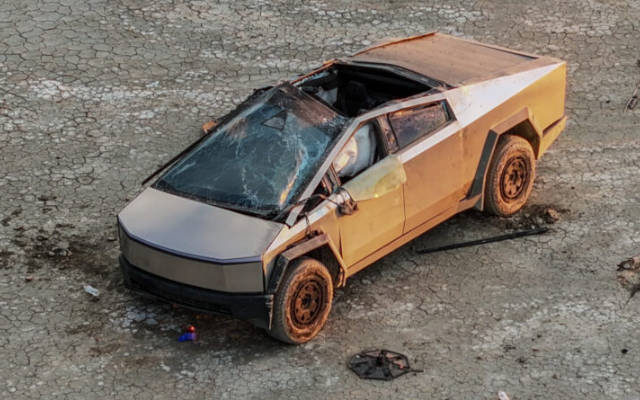Cybertruck Insurance Dilemma: Tesla's Challenge Ahead

Wrecked Cybertruck, one of many, and an obvious write-off
By EVWorld Si Editorial Team
Tesla's futuristic Cybertruck is facing a very real-world problem: insurance companies are backing away. In recent weeks, major providers including GEICO and Hanover Insurance have rescinded coverage for the vehicle, citing high repair costs, underwriting challenges, and limited production data. This development is sending ripples through Tesla's customer base and raising questions about the long-term viability of the Cybertruck in the consumer market.
The Cybertruck’s stainless steel exoskeleton, while visually striking and structurally robust, has proven difficult and expensive to repair. Even minor damage can result in bills exceeding $13,000, and parts availability remains limited. With fewer than 5,000 units sold in Q2 2025—a sharp decline from earlier quarters—insurers are struggling to assess risk and set premiums. Hanover Insurance explicitly stated that it could not “rate or underwrite the vehicle” due to its unique design and cost structure.
For Tesla, this insurance backlash presents a multifaceted challenge. First, it threatens future sales. Potential buyers are increasingly wary of purchasing a vehicle they may not be able to insure affordably—or at all. Anecdotal reports suggest that some customers have canceled Cybertruck orders after receiving quotes exceeding $500/month or being denied coverage outright. Others have been forced into commercial insurance plans, which carry higher premiums and stricter terms.
Second, it places pressure on Tesla’s support infrastructure. The company’s own insurance offering, Tesla Insurance, is available in select states and has stepped in to fill some of the gap. However, coverage varies widely, and not all owners have access. Tesla may need to accelerate the expansion of its insurance program, improve repair logistics, and offer more transparent cost estimates to reassure both current and prospective customers.
Third, it risks reputational damage. The Cybertruck was marketed as a bold leap forward in automotive design and durability. But the insurance crisis reveals a disconnect between innovation and ecosystem readiness. Owners are discovering that the vehicle’s uniqueness comes with hidden costs—not just in repairs, but in the ability to secure basic coverage.
Are buyers aware of the issue? Increasingly, yes. Social media platforms and EV forums are filled with posts from frustrated owners sharing cancellation notices, repair invoices, and insurance quotes. The story has gained traction in mainstream outlets, including Futurism, amplifying public awareness. Yet Tesla has remained largely silent, offering no official statement beyond promoting its own insurance product.
For current owners, the path forward is murky. Some are turning to smaller insurers like Erie or Safeco, which offer more flexible underwriting. Others are lobbying Tesla to provide broader coverage or subsidize premiums. If Tesla fails to act decisively, it risks alienating a core segment of early adopters and undermining the Cybertruck’s long-term market potential.
Ultimately, the Cybertruck insurance crisis is a cautionary tale about the collision between radical design and regulatory reality. Tesla may have built a truck for the future—but unless it can navigate the present, that future could be short-lived.
Sources:
- Futurism: Cybertruck Insurance Crisis
- Electrek: Tesla Cybertruck Insurance Issues
- Reddit: GEICO Dropped My Cybertruck
Original Backlink
Views: 849
Articles featured here are generated by supervised Synthetic Intelligence (AKA "Artificial Intelligence").
